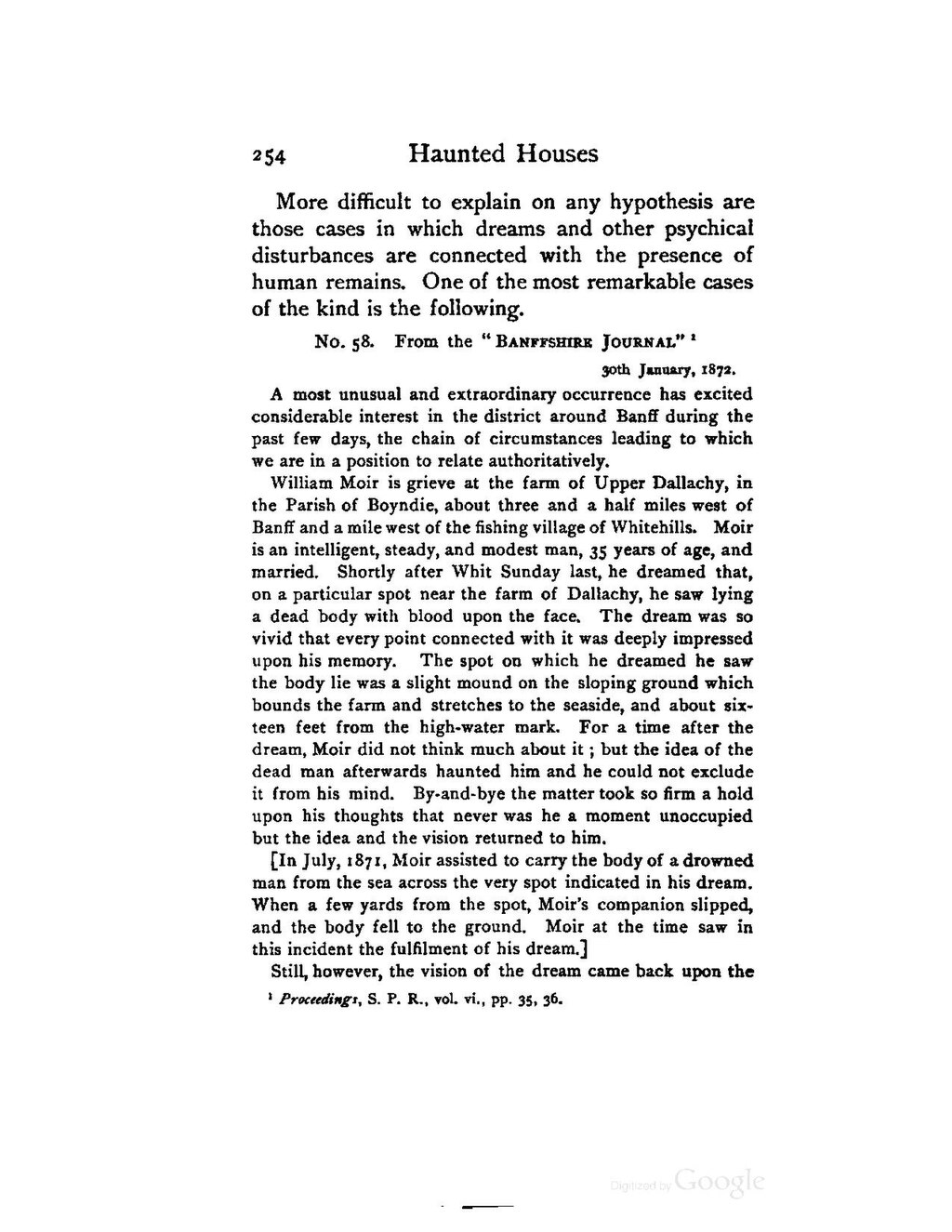More difficult to explain on any hypothesis are those cases in which dreams and other psychical disturbances are connected with the presence of human remains. One of the most remarkable cases of the kind is the following.
No. 58. From the "Banffshire Journal"[1]
A most unusual and extraordinary occurrence has excited considerable interest in the district around Banff during the past few days, the chain of circumstances leading to which we are in a position to relate authoritatively.
William Moir is grieve at the farm of Upper Dallachy, in the Parish of Boyndie, about three and a half miles west of Banff and a mile west of the fishing village of Whitehills. Moir is an intelligent, steady, and modest man, 35 years of age, and married. Shortly after Whit Sunday last, he dreamed that, on a particular spot near the farm of Dallachy, he saw lying a dead body with blood upon the face. The dream was so vivid that every point connected with it was deeply impressed upon his memory. The spot on which he dreamed he saw the body lie was a slight mound on the sloping ground which bounds the farm and stretches to the seaside, and about sixteen feet from the high-water mark. For a time after the dream, Moir did not think much about it; but the idea of the dead man afterwards haunted him and he could not exclude it from his mind. By-and-bye the matter took so firm a hold upon his thoughts that never was he a moment unoccupied but the idea and the vision returned to him.
[In July, 1871, Moir assisted to carry the body of a drowned man from the sea across the very spot indicated in his dream. When a few yards from the spot, Moir's companion slipped, and the body fell to the ground. Moir at the time saw in this incident the fulfilment of his dream]
Still, however, the vision of the dream came back upon the- ↑ Proceedings, S. P. R., vol. vi., pp. 35, 36.
